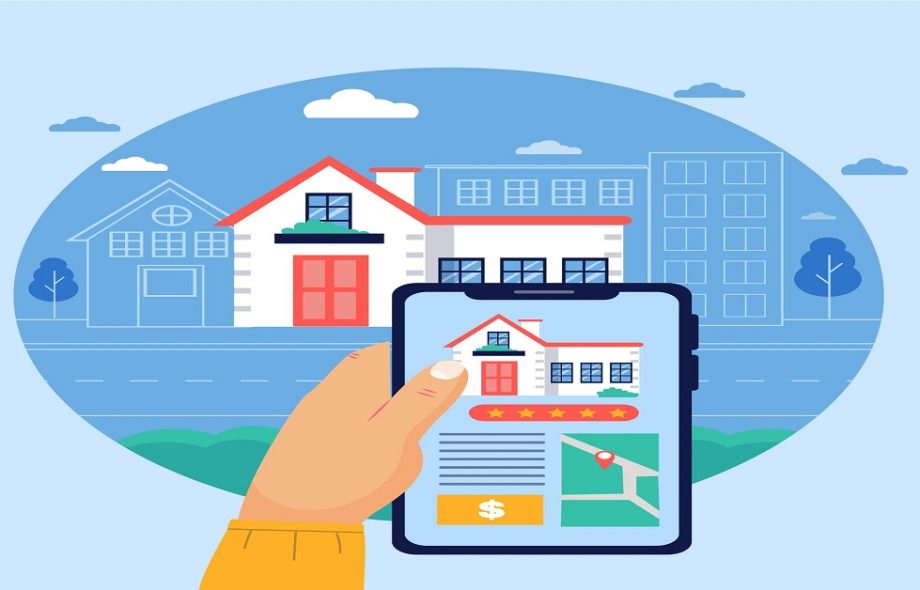The real estate industry is rapidly embracing technology to enhance property buying, selling, and renting experiences. Real Estate Mobile App Development is at the forefront of this transformation, enabling users to explore listings, schedule viewings, and connect with agents anytime, anywhere. These apps offer advanced features like virtual tours, location-based searches, real-time notifications, and secure transactions. For real estate businesses, custom mobile apps improve operational efficiency, customer engagement, and lead generation. As competition grows, investing in innovative Real Estate Mobile App Development ensures a seamless user experience and helps agencies stay ahead in the digital-first property market of today.
1. Accurate and Up-to-Date Property Listings
The Challenge:
Real estate apps rely heavily on data—especially property listings with accurate information, images, and availability. Outdated or incorrect listings can frustrate users and damage your app’s credibility.
How to Overcome It:
• Integrate with reliable MLS databases and third-party APIs that offer real-time updates.
• Use automated sync tools to keep listing data fresh.
• Provide options for property owners or agents to verify and update listings directly through the app.
• Employ AI-powered validation to detect duplicate or fraudulent listings.
________________________________________
2. Complex Search and Filter Functions
The Challenge:
Real estate apps often need robust search and filter features. Users may want to search based on location, price, number of bedrooms, amenities, property type, and more.
How to Overcome It:
• Develop a custom search algorithm that supports multiple filters without slowing down performance.
• Use faceted search to make the experience intuitive.
• Include AI-powered recommendation engines that improve search accuracy over time.
• Ensure search functions are optimized for both web and mobile platforms.
________________________________________
3. Scalability and Performance
The Challenge:
As your app grows in users and listings, performance can suffer. Slow load times, app crashes, and glitches create a poor user experience.
How to Overcome It:
• Use a scalable backend architecture such as microservices.
• Host your app on cloud platforms like AWS or Google Cloud to support traffic spikes.
• Perform load testing regularly to monitor how your app handles high demand.
• Optimize images and database queries to reduce latency.
________________________________________
4. Integration with Maps and Geo-Location Services
The Challenge:
Users rely on maps to see property locations, nearby amenities, and neighborhood insights. Integrating real-time map features can be technically challenging and resource-heavy.
How to Overcome It:
• Use trusted APIs like Google Maps, Mapbox, or OpenStreetMap.
• Enable GPS-based services to show listings near the user’s location.
• Incorporate heatmaps, school zones, public transport, and crime rate overlays.
• Cache frequently accessed maps to reduce API calls and loading times.
________________________________________
5. User Experience (UX) and Interface Design (UI)
The Challenge:
Real estate apps serve a wide demographic—from first-time homebuyers to seasoned investors. Poor UX design can lead to high bounce rates and abandoned sessions.
How to Overcome It:
• Design a clean, intuitive UI with easy navigation.
• Offer a guided onboarding experience for new users.
• Include interactive elements like swipe-to-save, favorite lists, and instant scheduling.
• Ensure the app is responsive and looks good on all devices.
________________________________________
6. Security and User Data Privacy
The Challenge:
Real estate transactions involve sensitive data like user identities, financial documents, and property ownership details. A security breach could lead to legal and reputational consequences.
How to Overcome It:
• Implement end-to-end encryption and SSL certificates.
• Use multi-factor authentication (MFA) for user accounts.
• Follow GDPR, CCPA, or other local data privacy laws.
• Conduct regular security audits and penetration testing.
________________________________________
7. Building Trust with Users
The Challenge:
Users are cautious when it comes to property apps, especially with so many fake listings and scams online. Gaining and retaining their trust is critical.
How to Overcome It:
• Use verified badges for agents and listings.
• Allow user-generated reviews and ratings for agents or landlords.
• Clearly display ownership and contact info for transparency.
• Provide secure chat features to communicate safely in-app.
________________________________________
8. Cross-Platform Compatibility
The Challenge:
Users may access your app from various devices—iOS, Android, tablets, desktops. Ensuring smooth, consistent performance across platforms can be difficult.
How to Overcome It:
• Use cross-platform frameworks like Flutter or React Native.
• Perform extensive device testing for bugs and UI inconsistencies.
• Ensure that all features (e.g., map integrations, filters) are fully functional across platforms.
________________________________________
9. Monetization Strategy
The Challenge:
Many developers struggle to define a sustainable monetization model for their real estate app.
How to Overcome It:
• Offer freemium models with premium features (e.g., virtual tours, advanced filters).
• Monetize via advertising or featured listings for agents.
• Introduce subscription plans for agencies or brokers with analytics dashboards and marketing tools.
• Include affiliate partnerships with mortgage, insurance, or legal services.
________________________________________
10. Legal Compliance and Regional Regulations
The Challenge:
Real estate laws vary by country, region, and even city. Ignoring regulations can result in app bans or legal actions.
How to Overcome It:
• Work with legal consultants during development to ensure compliance.
• Add location-based legal disclaimers within the app.
• Use geofencing to tailor app features according to regional rules.
________________________________________
Conclusion
Real estate app development cost is full of opportunities—but it’s also filled with technical and operational challenges. From maintaining accurate listings and secure transactions to offering exceptional UX and legal compliance, developers must address multiple pain points to create a high-performing, trustworthy app.
By planning ahead and leveraging the right tech stack, APIs, and security protocols, you can overcome these challenges and build a successful real estate app that meets both market demands and user expectations.
 :
https://in.pinterest.com/devtechnosys/_created/
:
https://in.pinterest.com/devtechnosys/_created/

